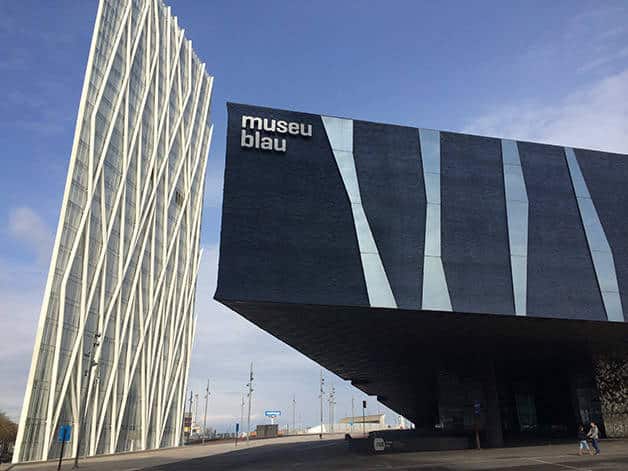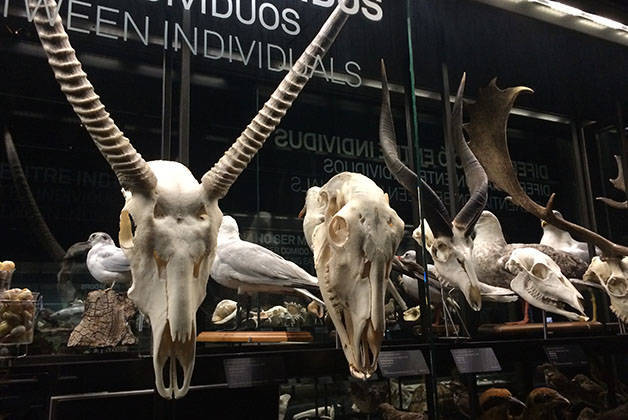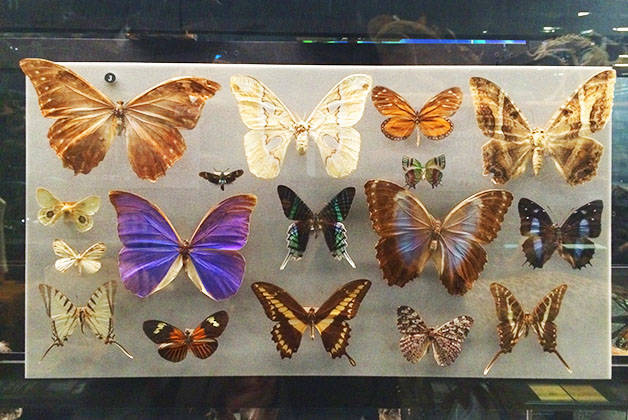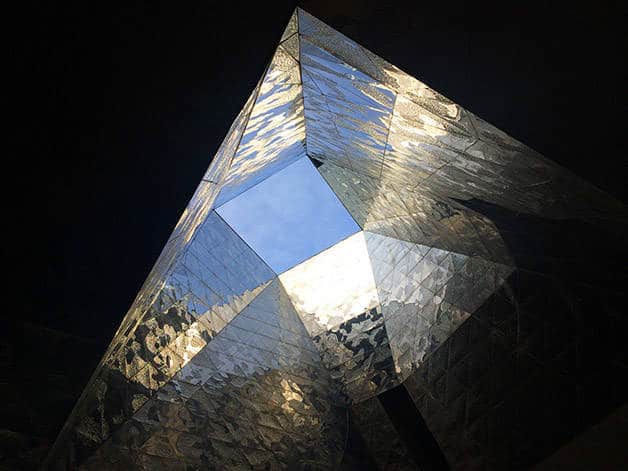Museu Blau: the Barcelona natural science museum

youBelieve it or not, there is more to life than Gaudí! And if you’re coming to Barcelona with kids who love natural science, then a trip to the Museu Blau is obligatory.
The remarkable building of the natural science museum
The Museu Blau is set in a unique building that is one of the city’s most striking. Built by architects Herzog & Meuron in 2004, it is unusual as it is constructed in the shape of a triangle. The materials used create numerous reflections between the building and its environment, with some very surprising results.
- The museum’s triangular structure is very interesting but it sometimes makes orientation a little difficult. There is no route to follow when visiting the museum but there are many spaces that you can cross in different ways.
- Remember to take note of various points to orient yourself during your visit or else you could quickly end up getting confused and not knowing which direction to head in.
Planeta vida, Museu Blau’s permanent exhibition
Museu Blau’s permanent exhibition, entitled “Planeta vida” (planet life) presents the Earth as the result of interaction between living beings and the Earth’s atmosphere.
The rivers, mountains and oceans are intimately linked to organisms living on the planet and form a global ecosystem that regulates the Earth. To explain this phenomenon, the exhibition is divided into two parts:
- The Earth’s biography: a voyage through the planet’s evolution from its birth through all the subsequent eras up to the Cenozoic.
- The earth today: this part explains the nature of the Earth and everything we find there (fossils, animals, plants, algae, fungi, bacteria, rocks, minerals…)
- Science islands: Mini exhibitions dealing with evolution, the classification of species, the Mediterranean and even animal behaviour.
- Information is available in Catalan, Spanish and English although the great number of fossils, rocks, skeletons or animal reproductions don’t need a huge amount of explanation.

Museu Blau, an interactive museum
During my visit to Museu Blau, it was clear that the groups of children between11 and 14 who were there were absolutely in their element. The museum makes a great effort to appeal to them.
Their favourite is obviously the interactive experiences: touch screens, magnifying glasses, multimedia devices, touchable models, audiovisual screenings…there is plenty to do.
Temporary exhibitions at the natural science museum
The museum’s temporary exhibitions allow you to better understand some specific aspects of natural science. It’s a chance to go more deeply into a given theme of science history, biodiversity or nature.
You can check what temporary exhibitions are happening on the Museu Blau website.
Useful information
Museu Blau opening hours
October to February:
- Tuesday to Friday 10am to 6pm
- Saturday 10am to 7pm
- Sundays and holidays 10am to 8pm
March to September
- Tuesday to Saturday 10am to 7pm
- Sundays and holidays 10am to 8pm
Closed non-holiday Mondays, the 1st of January, 1st of May, 24th of June and 25th of December.
Museu Blau prices
Full price
- Permanent exhibition: €6
- Temporary exhibition: €6.50
- Combined permanent ad temporary exhibitions: €10.50
- Combined Museu Blau – Jardí Botànic: €7

Reduced price
- Permanent exhibition: €2.70
- Temporary exhibition: €4.50
This price applies to young people aged 16 to 29, over 64s, unemployed people, families (minimum one person under 16 and maximum two accompanying adults) large family or single parent family card holders, library card holders, and groups of more than 9 people.
Free entry
- Children under 17
- Holders of a Barcelona Card or targeta rosa
- Members of ICOM the museologist society of Catalonia
- Journalists, tourist guides and teachers
- Disabled people and those accompanying them
Accessibility to the Museu Blau
The Museu Blau is particularly well adapted to people with disabilities or reduced mobility:
- Wheelchairs available on demand at the entrance.
- Completely adapted building
- Museum map in braille
- “Planeta vida” audio guide for visually impaired people
- Explanations of different rooms and spaces in braille
- Tactile reproductions
Happy discovering!

